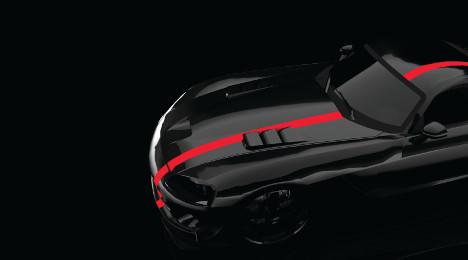4 questions with NADA Used Car Guide’s Larry Dixon

In the latest installment of the annual Power 300 issue of Auto Remarketing, we launched a new feature to spotlight just a few of the companies on the list. In a Q&A format, we go behind the scenes with some of the leading companies in the used-car space.
Next up in this series is Larry Dixon, senior manager of market intelligence, NADA Used Car Guide
Auto Remarketing: Looking out over the summer months, what is NADA UCG’s prediction for depreciation? Will rates differ from seasonal norms at all, and what kind of pricing can dealers expect in the lanes?
Larry Dixon: We expect the pattern of depreciation to follow a typical path for the remainder of the year – usually we’ll see depreciation improve a bit June and July, increase between September and October, and then lessen again over the last two months of the year.
Last year was something of an anomaly in that depreciation through the heart of the summer was unusually steep, with prices of vehicles up to 8 years old falling by roughly 3 percent on a monthly basis in July and August. For context, depreciation for the pair has been closer to 2 percent over the past 10 years (excluding 2008–2009).
For 2015, we anticipate depreciation will move back toward the historical average. As for September and October, we expect prices to fall by about 3 percent per month — which is in line with what we observed last year. Depreciation in November and December is forecast to be in the 1 percent to 2 percent range — or a bit steeper than in 2014.
All told, we expect depreciation to reach 14 percent for the full calendar year, which is slightly worse than 2014’s rate of 13 percent. That being said, 14 percent is strong by historical standards. We foresee much steeper declines in 2016 and 2017.
AR: Let’s take a look at the used supply environment. Does NADA UCG expect any significant increase in supply over the course of the second half of the year?
LD: The rate of supply growth should be fairly steady moving forward through the second half of the year. NADA Used Car Guide’s used-vehicle supply forecast shows overall late-model supply (vehicles up to 5 years old) rising by 4 percent in the second half of the year and off-lease volume increasing by a more significant 9 percent. These figures are similar to our estimates for the first half of the year. Rising new-vehicle sales and lease penetration will keep volume on the rise for years to come.
AR: Are any segments, in particular, seeing supply expand more rapidly? If so, why?
LD: Supply growth has been greatest for subcompact cars and compact and midsize utilities (both non-luxury and luxury). Growth is a reflection of both new-sales growth and a rise in lease penetration. For example, not only have new compact utility sales grown by an incredible 72 percent since 2010 (new sales overall are up by roughly 41 percent), but lease penetration has moved from 16 percent to 25 percent as well. Combined, these factors increase used supply at a faster rate.
AR: What segments are performing the strongest as far as price retention goes, and why?
LD: Midsize and large pickups are doing exceptionally well right now. In fact, they’ve been the strongest performing segments for quite some time. Retention for 3-year-old midsize and large pickups stands at 64 percent and 60 percent, respectively. For context, average retention for all 3-year-old models is 52 percent. Retention for the two pickup segments has declined by just 2 percentage points since the end of 2014.
High new-vehicle prices, relatively low supply — pickup owners tend to hold onto their vehicles longer, therefore it takes more time for them to return to the market — and lower gasoline prices all support pickup demand and as such retention.
Other strong performing segments include compact, midsize and large utilities. Three-year retention for the group averages 56 percent. Highly versatile and more fuel-efficient than in the past, used demand for utilities mirrors the strength we’ve witnessed on the new side of the market.
Other features in this special section:
4 questions with NextGear’s Brian Geitner

 View The Latest Edition
View The Latest Edition

